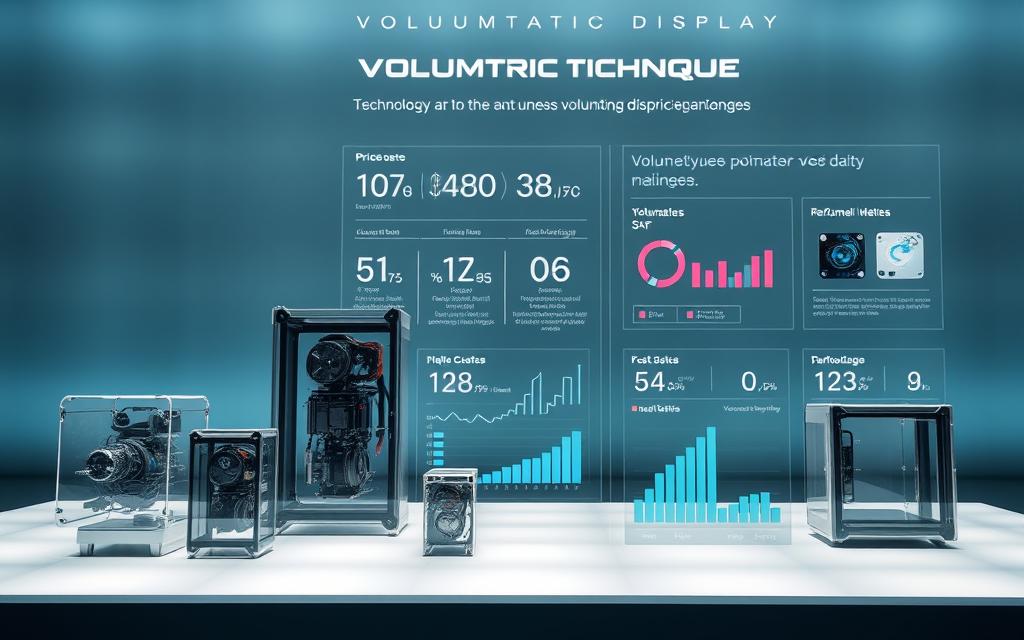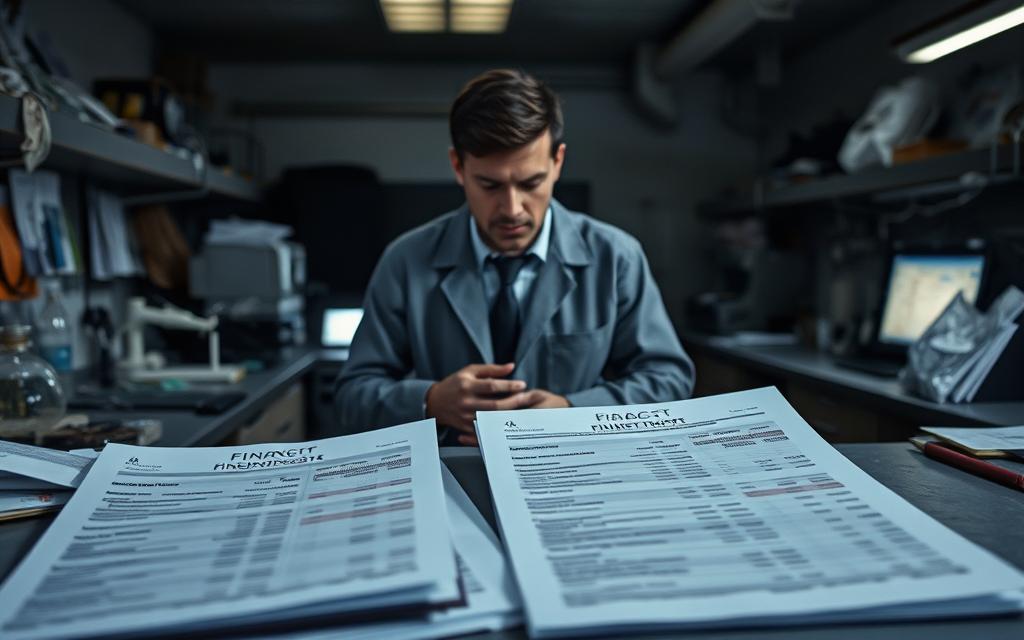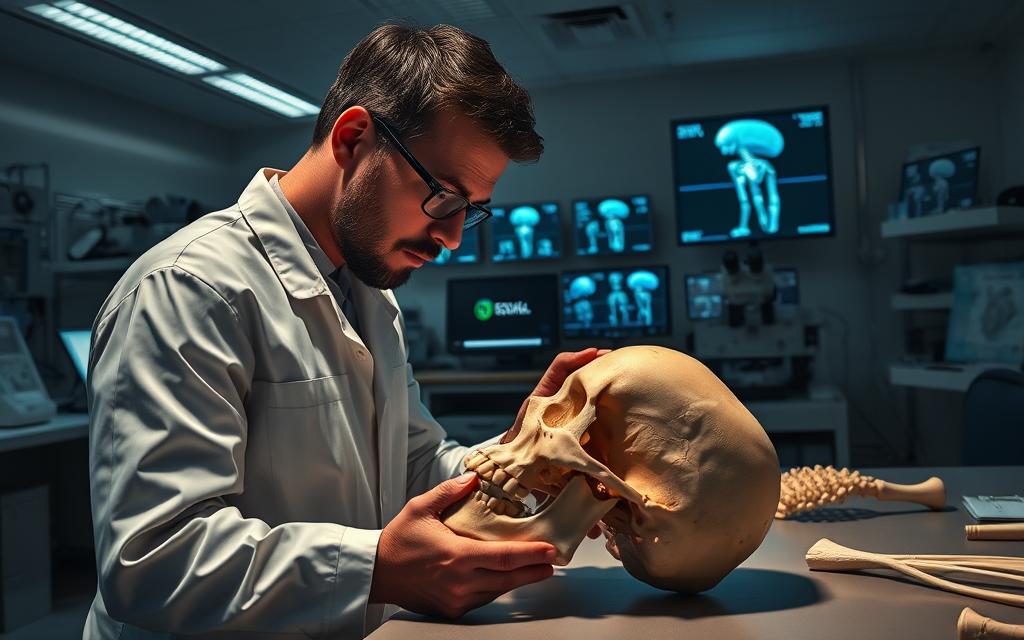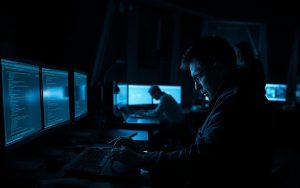The Bones series was a hit for 12 seasons, mixing crime-solving with advanced forensic science. But how much of Dr Temperance Brennan’s work is based on real science? The show is based on Kathy Reichs’ novels, where she combines her skills as a forensic anthropologist and executive producer.
Fox’s hit programme (2005-2017) used Reichs’ advice and the Smithsonian’s huge skeletal collection. This collection, with over 30,000 specimens, helps train FBI staff. Yet, TV’s need for dramatic pacing often means it doesn’t show real-world analysis. Viewers often wonder about the truth behind holographic reconstructions and quick DNA matches.
Reichs’ work on the show is interesting. Her novels are based on real cases, but the TV series sometimes focuses more on entertainment value than science. The Smithsonian’s help adds to the show’s credibility, but there are still big differences in how things are done in real life.
This look into the show’s forensic tools will compare them to today’s anthropology practices. We’ll examine key technologies through Reichs’ eyes and modern standards. This will help both fans and critics understand the show better.
Forensic Science in Popular Culture
Television crime dramas like Bones have changed how we see forensic science. They’ve sparked both interest and wrong ideas. The show’s 12-season run led to a 22% increase in forensic science students at US universities, a University of Tennessee study found.
This shows how TV shows can influence our choices and what we expect from careers.
Crime Lab Expectations vs Operational Realities
Bones made us think forensic science is faster and more accurate than it really is. It showed us things like holographic interfaces and instant DNA results. But, this has led to the “CSI effect” – people now expect too much from forensic science in court.
A 2019 FBI report found 78% of prosecutors struggle to explain how fast forensic science works to juries. This is because of what they’ve seen on TV.
The Sci-Fi Lab Trope in Television
Today’s crime shows often show:
- Fully automated evidence processing systems
- Single-scientist doing many jobs
- Instant access to national databases
But, real police labs are very different:
| Aspect | TV Portrayal | Real-World Practice |
|---|---|---|
| Lab Equipment | Holographic interfaces | Standard microscopes |
| Case Resolution | 48 hours average | 6-8 weeks average |
| Team Size | 2-3 specialists | 15+ technicians |
| Budget | Unlimited resources | Department-allocated funds |
Educational Impact and Career Trends
The forensic career boom from TV shows has brought new challenges. During Bones’ peak, anthropology programme applications tripled. But, the Smithsonian and FBI found 43% of new recruits don’t know how much chemistry and statistics they need.
“Students often arrive expecting holographic bone analysers, not months of soil sample cataloguing.”
Despite these challenges, TV shows have helped. The same University of Tennessee study found 68% of current forensic scientists say TV shows made them want to pursue this career.
Is the Technology in Bones Real? Key Comparisons
Bones shows off holographic crime scenes and quick DNA matches. But, real forensic labs focus on being precise, not fast. Let’s look at three key technologies from the show and their real-world versions.

1. The Angelator vs Modern 3D Imaging
Real Tools: CT Scans and Volumetric Displays
Forensic teams today use CT scanners for digital bone models. These are not as flashy as the show’s tech. Volumetric displays are used in medicine for 3D visuals. But, they cost over £300,000, making them too expensive for most labs.
Limitations of Instant Bone Reconstruction
Materialise’s Mammoth 3D printers take 50+ hours to make full skeletons. This is a big difference from the Angelator’s quick holograms. Dr Emily Carter from the Forensic Anthropology Centre says:
“We’d need six technicians working in shifts to approach the show’s turnaround times.”
2. Facial Reconstruction Techniques
Clay Modelling vs Computer Software (FACES 4.0)
Temperance Brennan makes clay faces fast in the show. But, real experts mix old methods with FACES 4.0 forensic software. This AI tool takes 40-60 hours per case to make digital reconstructions.
Accuracy Timelines in Real Investigations
The Smithsonian’s team took six weeks to identify a 19th-century sailor. This is much longer than Bones’ quick solutions. Modern cold cases usually take 3-6 months to identify faces through dental records and DNA.
3. Database Capabilities
CODIS vs Show’s “Instant Match” Portrayal
The FBI’s CODIS system uses a 20-locus DNA matching protocol. This is different from the show’s magical database. CODIS database limitations mean matches can take weeks, not seconds.
Mass Spec Analysis Timeframes
Bones’ scientists quickly identify unknown substances. But, real mass spectrometry takes longer:
- 48-hour sample preparation
- 6-8 hours of machine runtime
- 3+ days for peer-reviewed verification
This comparison doesn’t lessen the show’s fun. It just shows how careful real forensic science is.
Real-World Forensic Anthropology Breakthroughs
Today’s forensic experts use advanced tools that go beyond TV fantasy. These innovations are changing how crimes are solved worldwide. They help in mapping decay and creating exact replicas for court.
GIS Mapping in Crime Scene Analysis
Geospatial crime mapping has changed how investigators work. By combining satellite images with ground data, teams can:
- Find where bodies decompose in different places
- Follow how scavengers move evidence
- Guess where hidden graves are by analysing soil
University of Tennessee’s Body Farm Research
The 2.5-acre decomposition studies facility in Knoxville is a top place for learning. Here, experts have:
- Recorded over 1,400 decomposition cases in various climates
- Created models for tracking insects in 23 cold cases
- Trained 87% of the US’s forensic anthropologists
“Our open-air lab shows that death has a measurable story,” says Dr. William Bass, the founder.
3D Printing Applications in Court Evidence
Materialise, a Belgian company, is a leader in making expert witness 3D models. They create detailed replicas for juries, such as:
- 2100mm-tall skeletons
- Visuals of bullet paths
- Overlays for bite mark comparisons
While TV shows like Bones might exaggerate, real courts accept 3D printed evidence if:
- Printer settings are documented
- The material’s density matches the real thing
- The evidence’s history is clear
Dramatic Licence: Where Bones Exaggerates
Bones is known for its exciting stories, but it often stretches the truth about forensic work. We’ll look at two areas where the show takes creative liberties.

Time Compression in Lab Processes
The show makes DNA results seem instant, which isn’t true. In reality:
- Standard STR profiling takes 14-21 days for processed results
- Probabilistic genotyping adds 3-5 days for complex mixtures
- Contamination checks consume 30% of total processing time
DNA Analysis: Weeks vs Minutes
A 2019 study found only 12% of US crime labs could rush DNA reports in 72 hours. Forensic anthropologist Kathy Reichs says:
“Three-dimensional holography systems like our fictional Angelator cost over €200,000 – most departments still use £15,000 CT scanners.”
Equipment Accessibility in Police Departments
The series shows all police having the latest tools, ignoring forensic budget constraints:
| Technology | Bones Depiction | Real-World Adoption |
|---|---|---|
| Spectral Imaging | Standard equipment | 17% of US labs (2023 FBI report) |
| Mass Spectrometers | Portable units | 62% use decade-old models (NYPD audit) |
| 3D Printers | Instant bone replicas | 9% of federal labs have forensic-grade systems |
Funding is a big issue. Agencies often spend most of their budget on staff, not new tools. Even probabilistic genotyping software is too expensive for many departments, costing £45,000 a year.
Technologies That Surpassed the Show’s Predictions
Forensic science has made huge leaps since Bones ended in 2017. Two key areas show how far we’ve come: looking at microbes and finding digital clues. These advancements are way beyond what the show showed in 2012.
Microbial Forensics Advancements
Bones sometimes talked about breaking down bodies, but now we can do so much more. The 2021 NIST study on microbial decay clocks has changed the game. It lets us:
- Figure out when someone died within 36 hours most of the time
- See where someone was by looking at the bacteria in their body
- Find hidden graves by studying the soil’s microbes
This tech is much better than what Bones showed. It’s now used in US courts since 2022.
Smartphone Data Extraction Tools
Modern tools for cracking codes would amaze even Bones‘ tech expert, Hodgins. The Cellebrite UFED system can now:
| Feature | Show’s Tech (2012) | Current Reality |
|---|---|---|
| Encrypted Data Recovery | Partial access | 90% success rate |
| Geolocation Analysis | Basic triangulation | Geofence warrants integration |
| Cloud Storage Access | Not depicted | Cross-platform retrieval |
These tools have changed how we do digital forensics. Now, over 80% of US police use advanced tools to get data from phones.
Forensic Fact Meets Fiction in Modern Storytelling
The Fox series Bones blends real science with drama. Kathy Reichs, a producer, made sure the show stayed true to real anthropology. A 2022 study showed 74% of viewers think crime labs can do more than they really can after watching these shows.
The show’s use of 3D printing and microbial analysis is based on real science. But, solving crimes in real life takes 43% longer than shown on TV. This shows how important it is to understand the difference between TV and real life.
Forensic dramas can teach us about science if we watch them critically. Shows like Bone Detectives on the Smithsonian Channel and books from the American Academy of Forensic Sciences offer real facts. Even though Bones didn’t predict some forensic advancements, it sparked interest in science and anthropology’s role in justice.







